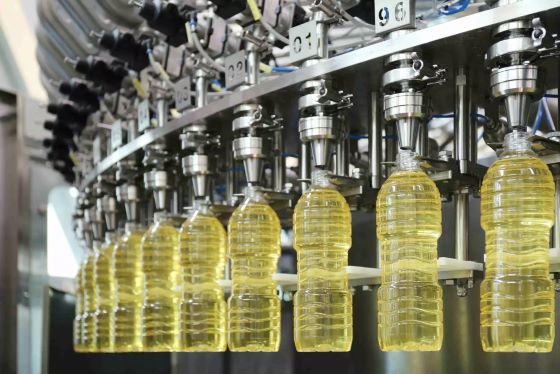ADMECH TECHNIQUE
Edible Oil Refinery

Solvent extraction process produces crude Oil, which contains a number of harmful undesirable substances like Free Fatty Acids (FFA), gums, sediments and colouring materials, phosphatides, hydrocarbons etc. Before being consumed that need to be removed from crude oil.
Refining is the process to remove such undesired substances from the extracted oil in the Solvent Extraction Plant, without losing out on the useful factors or affecting the composition.
Refining is a set of processes or treatments necessary to turn vegetable raw oil into edible oil obtained from various seeds/cake i.e. soybean, sunflower, mustard, rice bran etc. by pressing or solvent extraction.
PROCESS
Degumming
Vegetable oil contains lecithins, phospholipids, and metals, which are generally called mucilaginous gums or simply gum because of their appearance. The process of elimination of the gums is called degumming. These gums are natural emulsifiers, that can cause an increase in viscosity which is an important parameter for the final product.
Neutralization consists in the removal of free fatty acids, which come from the partial natural hydrolysis of triglyc- erides. This is done or by steam stripping in the case of short fatty acids, such as in palm or coconut oil. Other- wise, pH is increased by adding a dilute solution sodium hydroxide or lime. The fatty acids are transformed in soaps, which are separated from the basic water phase, and submitted to a second treatment with hot water at 65-90 °C. The by-product of this step is called soapstock.
Bleaching.
The Bleaching plant is designed for the total clean-up operation of oil to clean color pigments, oxidative prod- ucts and any chemical which is over flown from degum- ming section. The plant is designed to have slurry prepa- ration, Bleaching and Filtration to storage temperature and further operations. The bleaching chemical is mixed with oil at 100 C and kept at this temperature for brief period to absorb the Color pigment, absorb the all other chemicals and oxidative product.
During the last steps of refining process, the oil is stripped with vapor at a high temperature to remove all of the remaining unpleasant odors and flavors present in it. This step removes residual fatty acids, sterols, and other unsa- ponifiable substances.
Winterization or dewaxing
Winterization or dewaxing is a process in which oil is separated from waxes, tocopherols, and residual phospholipids, which may cause turbidity issues in the oil if they remain present in the final product. In a standard process, room temperature oil is blandly stirred while it slowly cooled down, in order to crystalize all the high melting temperature substances. The solids are then separated either by decantation, filtration, centrifugation, or other solid liquid separation techniques.
